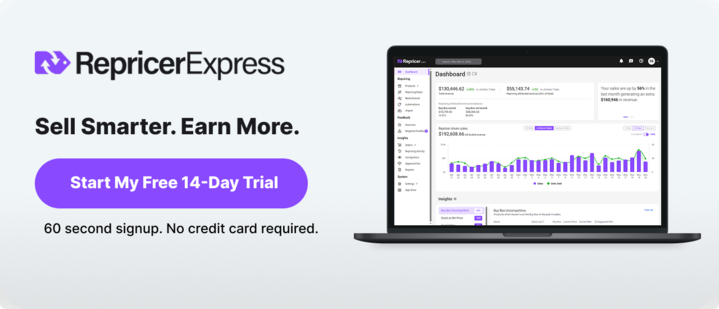How do you handle Amazon returns and refunds without losing margin or tanking your ratings? The short answer is to prevent avoidable returns with clearer product pages, set a fair policy you can actually deliver, and run a tight workflow for authorizations, labels, inspections, and refunds. Add a few sensible metrics, and you will spot problems early and keep more cash in the business.
What is a return on Amazon and why does it matter?
A return is any order the buyer sends back for a refund or replacement. So far, so straightforward, but on Amazon that can happen in two different ways:
- For FBA, Amazon receives and grades the item, then issues the refund and credits or charges you based on condition.
- For FBM, you approve or deny requests within policy, receive the parcel, inspect it, and process the refund.
It matters because returns affect cashflow, fees, restock time, and your Order Defect Rate, so small improvements here move both profit and placement.
16.9% of all eCommerce purchases were returned in 2024, up by 39.2% year over year.
How to write a great returns policy
First of all, set a window you can meet, outline acceptable condition, and explain who pays for return shipping in common scenarios. Then aim to match or beat category norms on timing, then keep the policy short enough for a buyer to read on a phone.
Give yourself room to use a partial refund when items come back used or missing parts, and document examples so your team applies the standard the same way every time.
An estimated 15% of all returns and claims were fraudulent in 2024.
How to make your product page “return-proof”
Returns often start on the listing. This is why it’s so important to lead with accurate photos on a clean background and add one lifestyle shot that shows scale or fit. Make sure you include sizing or compatibility details in bullets and mirror the search terms customers use.
On top of that, state what’s in the box and call out common deal-breakers like care, batteries, region codes, or assembly steps. Finally, add a brief care or setup tip in the thank-you message to head off “it doesn’t work” claims that are really user setup issues.
62% of fashion and beauty shoppers in the UK filter by size.
How do returns work when Amazon handles them?
For FBM, keep it tight and repeatable, like the following workflow:
- Approve valid requests inside your stated window so buyers feel looked after and cases don’t escalate.
- Send a prepaid label where policy says you should, and you include a short checklist that explains how to pack and what to include.
- Log the return against the order so inspection has the reason code in front of them.
- Inspect within two working days and update the order with notes and photos if something’s missing or used.
- Restock A-grade items the same day and route B-grade items to a secondary channel or liquidation so capital isn’t stuck.
With FBA, Amazon handles labels, grading, and refunds, and you receive a reimbursement or a charge based on condition. You still need to review FBA returns reports weekly to spot repeat issues by ASIN, and you raise SAFE-T claims when something’s off.
Peak-season return rates jumped more than 20% year over year in late 2024.
How to issue refunds fast without hurting cashflow
Speed wins trust, so issue refunds within two working days of inspection and include a one-line explanation if you apply a partial amount. Try to stick to a small menu of outcomes: full refund, partial refund with reason, or replacement. That way, you avoid case-by-case improvisation because consistency reduces disputes.
Also, remember to keep messages short, friendly, and specific so buyers know what will happen next and when.
“Serial returners” represent about 11% of online shoppers who return, yet drive roughly a quarter of UK non-food returns by value.
Which returns metrics actually matter?
You don’t need a dashboard full of dials. Track these and act weekly.
- Return rate by SKU tells you which product pages or suppliers create waste.
- Top three reason codes show where to fix content or packaging first.
- Days to refund reflects how easy your workflow is to run when volumes rise.
- Return cost per order adds shipping, fees, labor, and write-downs so you see real margin.
- Resell rate on returns shows how much stock you can recover and how quickly.
When you spot a high-return SKU, you lower risk by improving photos, rewriting bullets for clarity, and setting pricing guardrails that reflect higher handling cost. If you want to sharpen those guardrails across your catalog, it helps to have some pricing strategies that keep you competitive without gutting contribution margin.
Online returns volumes surged again during peak 2024, with one UK analysis estimating £27.3B in non-food returns for the year.
How do pricing and inventory choices affect returns?
Returns and price are linked. If you discount hard on a product that confuses buyers, you sell more units and process more returns. A better play is to hold a sensible floor price on high-return SKUs and win the sale with clarity, fast replies, and reliable delivery. If Buy Box share dips while your price is already inside your band, check speed, regional availability, and page quality before cutting price.
If you sell fast and restock slowly, pace promotions so you don’t over-sell and invite “where’s my order” contacts. A few smart restocking moves also keep pressure down when peak hits.
Easy returns mistakes to avoid
Small missteps can snowball into costs and complaints, so catch them early and your returns flow stays calm even on busy days.
Policy that looks great on paper but fails in practice
If the team can’t follow it on a busy Monday, it’s not a good policy. Write the shortest policy you can consistently deliver and remove edge cases that force judgment calls. Run a mock weekend spike and time every step, then cut or clarify anything that slows refunds or creates back and forth.
Vague product pages that hide deal-breakers
Missing size charts, unclear compatibility, and borrowed manufacturer copy push returns up. Fix the page before you lower the price. Add a simple size or fit graphic, a 15-second product-in-hand video, and a one line “works with” note to stop avoidable refunds.
Slow or inconsistent refunds
Waiting a week invites claims and bad reviews. Decide the outcome family once and apply it the same way across orders. Publish a two-day target, save refund templates for common cases, and use a single queue so nothing sits unseen.
No plan for B-grade stock
Without a channel for opened or lightly used items, you sit on capital. Decide whether you will recondition, bundle, or liquidate and act within the week. Create a separate condition note and an outlet listing so the inventory moves instead of gathering dust.
Chasing the Buy Box at any cost
Price cuts can’t fix poor content or slow dispatch. Align price with page quality and speed, and avoid triggers that suppress listings in the first place. If you hit the floor and still lose share, pause the chase, improve the page, and tighten ship times before you move prices again.
Quick recap and what to do next
Remember:
- Keep the returns policy short, phone-friendly, and easy for your team to run every day.
- Spell out size, fit, and compatibility so avoidable returns drop.
- Aim for a two day turnaround from receipt to refund to keep customers calm and cashflow tidy.
- Use saved quick replies for common moments so answers stay fast and consistent.
- Let the data lead by fixing the issue that shows up most often.
What to do this week:
- Publish a two paragraph returns policy buyers can read on a phone and your team can run every day.
- Rewrite bullets on your three highest return SKUs to clarify size, fit, or compatibility.
- Set a two day target for inspections and refunds and measure it next Monday.
- Create three quick replies for label issued, partial refund with a reason, and replacement confirmation.
- Review your return reports and pick one repeat issue to fix before the next promo.
Want price and returns to work together so margin holds while ratings improve? Book a free demo and we will show you how to keep price rules sensible while your support stays quick.
FAQs
What’s a reasonable returns window for small Amazon sellers?
Most sellers mirror the category norm, which is often 30 days. If your product needs longer trials or gifting windows, set that expectation clearly on the page and in your policy, then make sure your workflow can cope during peak.
When is a partial refund fair and safe?
Use partials when items come back used, missing accessories, or outside your stated window. Photograph the issue, explain it in one line, and apply the same rules across orders to avoid disputes.
How do I handle return shipping costs?
Many sellers cover return shipping for defects and mis-picks and ask buyers to pay for “changed my mind.” If you cover more as a goodwill gesture, keep it simple and track the cost so you can price in that reality on repeat offenders.
What should I do with opened or B-grade items?
Decide on a secondary channel, bundles, or liquidation, and process weekly so cash isn’t trapped. Update inventory fast so your Buy Box position isn’t affected by phantom stock.
Can I lower returns without changing the price?
Yes. Clear photos, size guides, short how-to videos, and faster replies cut avoidable returns. If price must move, use a floor that reflects higher handling cost on high-return SKUs so profit still holds.



